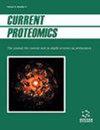促性腺激素释放激素类似物(GnRH-a) Buserelin在Clarias magur体内和体内的结合亲和力评价
IF 0.5
4区 生物学
Q4 BIOCHEMICAL RESEARCH METHODS
引用次数: 1
摘要
目的评价促性腺激素释放激素类似物(GnRHa) Buserelin (C60H86N16O13)在Clarias magur诱导育种中的结合亲和力和生物学效力。人们曾多次尝试诱导C. magur,但尚未取得令人鼓舞的结果。因此,迫切需要找到更有效的类似物或其他生物分子来诱导马格尔红鳉的繁殖,以促进可持续的水产养殖。目的:通过硅片法测定麻豆GnRH受体的结合亲和力,并验证其在麻豆诱导育种中的应用。在筛选了与C. magur GnRH受体结合的多肽后,选择了Buserelin (C60H86N16O13)作为潜在的GnRHa。诱导繁殖试验是在印度mpp的ICAR-CIFE Powarkheda中心进行的,将不同剂量的Buserelin与多巴胺抑制剂多潘立酮一起施用于育仔鸡。以商业鲑鱼GnRH (sGnRH)类似物Ovaprim®(Syndel, USA)作为对照。利用modeler软件生成C. magur GnRH受体的三维结构。分子对接研究表明,该受体的结合偏好为鸡(c) GnRH- ii > Buserelin > sGnRH >鲶鱼(cf) GnRH >人(m) GnRH。虽然与sGnRH相比,Buserelin表现出更好的结合亲和力,但在同等剂量为20µg/kg B.W时,magur诱导繁殖实验显示其性能相似,但在这两种情况下,雄性均未观察到milt的自发释放。用30µg/kg体重剂量的Buserelin可获得较好的繁殖参数。研究表明,GnRHa Buserelin可作为一种有效的诱导剂,用于大鼠黄颡鱼的繁殖。本文章由计算机程序翻译,如有差异,请以英文原文为准。
Evaluation of the Binding Affinity of a Gonadotropin-Releasing Hormone Analogue (GnRH-a) Buserelin through In Silico and In Vivo testing in Clarias magur
To evaluate the binding affinity and biological potency of gonadotropin releasing hormone analogue (GnRHa) Buserelin (C60H86N16O13) based on in silico and in vivo testing for induced breeding in Clarias magur. Many attempts have been made to induce C. magur but encouraging results have not yet been achieved. Hence, it is the need of the hour to find out more potent analogues or other bio-molecules for induced breeding in C. magur to facilitate sustainable aquaculture. To determine the binding affinity of C. magur GnRH receptor through in silico and its validation for induced breeding of C. magur. Buserelin (C60H86N16O13) was selected as the potential GnRHa after screening several peptides for their binding energy with the C. magur GnRH receptor. The induced breeding trial was set up at ICAR-CIFE Powarkheda Centre, M.P. India, and Buserelin was administered in different doses to the brooders along with the dopamine inhibitor domperidone. The standard treatment with the commercial salmon GnRH (sGnRH) analogue Ovaprim® (Syndel, USA) was used as the control. The 3-D structure of C. magur GnRH receptor was generated using MODELLER software. Molecular docking studies revealed the binding preference of the receptor as chicken (c) GnRH-II > Buserelin > sGnRH > catfish (cf) GnRH > human (m) GnRH. Though Buserelin showed better binding affinity compared to sGnRH, induced breeding experiments with magur showed similar performance of the ligands at the equivalent dose of 20 µg/kg B.W., but the spontaneous release of milt from the males was not obsereved in both the cases. Significantly better reproductive parameters were recorded with Buserelin at the dose of 30 µg/kg B.W. The study revealed that that the GnRHa Buserelin can be used as an effective inducing agent for breeding in C. magur.
求助全文
通过发布文献求助,成功后即可免费获取论文全文。
去求助
来源期刊

Current Proteomics
BIOCHEMICAL RESEARCH METHODS-BIOCHEMISTRY & MOLECULAR BIOLOGY
CiteScore
1.60
自引率
0.00%
发文量
25
审稿时长
>0 weeks
期刊介绍:
Research in the emerging field of proteomics is growing at an extremely rapid rate. The principal aim of Current Proteomics is to publish well-timed in-depth/mini review articles in this fast-expanding area on topics relevant and significant to the development of proteomics. Current Proteomics is an essential journal for everyone involved in proteomics and related fields in both academia and industry.
Current Proteomics publishes in-depth/mini review articles in all aspects of the fast-expanding field of proteomics. All areas of proteomics are covered together with the methodology, software, databases, technological advances and applications of proteomics, including functional proteomics. Diverse technologies covered include but are not limited to:
Protein separation and characterization techniques
2-D gel electrophoresis and image analysis
Techniques for protein expression profiling including mass spectrometry-based methods and algorithms for correlative database searching
Determination of co-translational and post- translational modification of proteins
Protein/peptide microarrays
Biomolecular interaction analysis
Analysis of protein complexes
Yeast two-hybrid projects
Protein-protein interaction (protein interactome) pathways and cell signaling networks
Systems biology
Proteome informatics (bioinformatics)
Knowledge integration and management tools
High-throughput protein structural studies (using mass spectrometry, nuclear magnetic resonance and X-ray crystallography)
High-throughput computational methods for protein 3-D structure as well as function determination
Robotics, nanotechnology, and microfluidics.
 求助内容:
求助内容: 应助结果提醒方式:
应助结果提醒方式:


